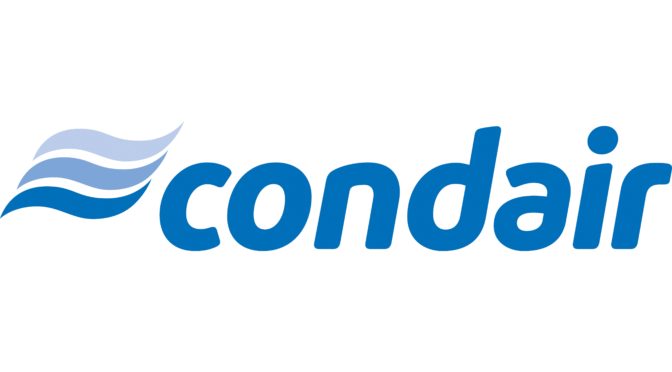Category Archives: Construction
New Kinemagic model even more accessible
Story
 The Kinedo range of cubicles from Saniflo has been extended with an extra model in the Kinemagic range.
The Kinedo range of cubicles from Saniflo has been extended with an extra model in the Kinemagic range.
The Kinemagic Serenity Plus is a high quality, all-in-one shower cubicle that has been designed to fit in exactly the same space as a standard bath and can be installed with the minimum fuss and hassle.
It is particularly suitable for less mobile or older customers thanks to the innovative magnetic handset holder that ‘sticks’ to any part of the shower rail making it easier to handle for people with a weak grip. An integrated horizontal safety bar provides support along the middle section of the cubicle to provide extra security and peace of mind for those who need to hold on whilst moving along the shower. An additional durable grab bar is also placed at the entry of the cubicle on either the left or right-hand panel (depending on installation) to help the customer access the cubicle with ease. Further safety features include an integrated cool-touch thermostatic shower control to eliminate scalding if the user touches it by accident and a comfortable fold-down seat that takes up to 150kg.
Access into the cubicle is via a low entry shower tray that is just 30mm in height and has anti-slip flooring for the ultimate, safe showering experience. The tray has unique, adjustable feet for unbreachable and uneven floors to ensure a flat and even installation – something very important to those who are slightly shaky on their feet.
Customers love the Kinemagic because it’s easy to clean and maintain. With sleek glass internal panels, rather than tiles and grout, and Cristal Plus coating – a permanent, anti-limescale coating that minimises the build-up of calcium deposits and dirt on glass – the need to clean is reduced. The treatment encourages water to run off the glass without leaving streaks or water marks. Another small, but relevant feature is the sleek, smooth shower hose. It doesn’t collect dirt and grime like coiled hoses and can be washed in no time.
The quality of the unit is second to none and it is a sleek and stylish shower solution for any bathroom. After all, why should anyone compromise when it comes to their personal bathroom space?
View Kinedo's profile:
Duke Ellington Theatre ‘Egg’
Story
 Washington D.C.’s Duke Ellington School of the Arts reopened last year following a multi-million dollar renovation. The modernization project, designed by a Joint Venture Partnership between cox graae + spack architects and Lance Bailey & Associates, has transformed the aging historic National Landmark into a top-tier student facility.
Washington D.C.’s Duke Ellington School of the Arts reopened last year following a multi-million dollar renovation. The modernization project, designed by a Joint Venture Partnership between cox graae + spack architects and Lance Bailey & Associates, has transformed the aging historic National Landmark into a top-tier student facility.
The stunning design has struck a balance between restoring and respecting the original historic building while creating major new academic and performance spaces. The interior environment centres on a giant oval-shaped structure within the four-story atrium – the Duke Ellington Theatre ‘egg’. Inside the egg is a full-sized 800 seat theatre complete with orchestra pit, lighting catwalks and high-performing acoustics.
Advanced BIM modelling and 3D laser scanning techniques were employed for the complex design of the theatre. Once constructed, the outer shell was expertly hand-finished in Armourcoat polished plaster by local installers ACI/Senza Fine. The design team took inspiration from piano keys for the interior, featuring crisp white wall finishes with black accents, paying homage to the iconic musician, composer and D.C. native Edward Kennedy ‘Duke’ Ellington. In total over 25,000ft2 of finishes were applied to the theatre, cafeteria walls and columns over three levels.
Chris Ambridge, Associate Principal at cg+s architects, commented “The choice to use Armourcoat came at the end of an extended process of exploring many options. The decision was important since the theatre is the centre piece at the heart of the school. We found a precedent in London of a similarly complex application and quickly became comfortable that Armourcoat was the right product for our project in terms of cost/ schedule and aesthetics. The project team and Client have been delighted with the end result; the finish is sophisticated and durable. We hope to have opportunities to use Armourcoat again in the future.”
Photography: © Chris Ambridge
View Armourcoat's profile:
Condair at Data Centre World 2018
Story
 Condair is appearing at the forthcoming Data Centre World exhibition on stand D1060, at the Excel Centre in London from 21st to 22nd March. The company will be displaying the latest in adiabatic and steam humidifier technology, which provides in-duct evaporative cooling and humidification to data centres.
Condair is appearing at the forthcoming Data Centre World exhibition on stand D1060, at the Excel Centre in London from 21st to 22nd March. The company will be displaying the latest in adiabatic and steam humidifier technology, which provides in-duct evaporative cooling and humidification to data centres.
Condair has extensive experience in working with data centre designers and air handling unit manufacturers that need to incorporate evaporative coolers or humidifiers into their systems. Previous data centre projects have involved clients such as Facebook, Microsoft, Digital Realty, Hewlett Packard, Amazon and eBay.
Condair’s experts will be on-hand at Data Centre World to give advice on how the latest humidifier technology can reduce data centre operating costs through improved energy consumption and reduced maintenance requirements.
Products on display include the Condair ME evaporative humidifier that offers 0.68kW of adiabatic cooling to an air handling system for every 1kg of moisture evaporated into the air stream. As the humidifier can provide up to 1,440kg/hr of humidity while operating on less than 1kW, it presents significant benefits to data centres using free air cooling systems. The technology can be employed to deliver direct or indirect evaporative cooling to facilities in warmer climates or add massive amounts of low energy humidification to data centres using cold, dry outside air in cold climates.
Alongside its market-leading in-duct evaporative system, Condair will have the Condair RS resistive steam humidifier on its stand. The Condair RS offers steam humidification to data centres without the need to frequently replace boiling cylinders, as is the case with many on-board humidification systems supplied with CRAC units. The humidifier has a scale management system that allows lime scale that builds up in the boiling chamber to fall into a removable tank at the base of the unit. Routine scale removal can be carried out by in-house maintenance staff in minutes, saving costs on consumables and maintenance time.
The Condair Group is the world’s leading specialist in humidification and evaporative cooling, with energy efficient, hygienic and innovative technologies for commercial, industrial and heritage applications. Condair is represented in the UK by Condair plc, which offers system design, manufacture, supply, installation, commissioning, maintenance and spares. Condair plc is the new name for JS Humidifiers following the organisation’s rebranding in October 2014. You can find out more by visiting the company’s website at www.condair.co.uk.
View Condair's profile:
Should RCBOs be considered compulsory for residential housing stock?
Story

As the latest revision of the IET Wiring Regulations (the 18th Edition) looms large, Dave Enefer of Crabtree asks whether RCBOs should be considered compulsory for all circuits in residential housing, especially given the evidence of the benefits of Miniature RCBOs to personal safety of occupiers & electrical operatives.
Public awareness of electrical faults and accidents has arguably never been higher. Even with all the advances in electrical safety technology and hardware there’s still room for improvement in take up of use of these technologies. Electrical dangers can come from many sources but when they do they shouldn’t bring with them added risk or inconvenience.
Why use Miniature RCBOs?
For any landlords, tenants, homeowners or those uninitiated in electrical products, RCBO stands for Residual Current Circuit Breakers with Overcurrent Protection. These devices are a combination of an RCD (Residual Current Device) and MCB (Miniature Circuit Breaker) in one.
In layman’s terms, an RCD detects Earth Leakage, i.e. current flowing where it shouldn’t, switching the circuit off where there is an Earth fault current. The RCD element of the RCBO is there to protect people.
In housing installations it’s not unusual to find that one or more RCDs are used alongside MCBs in the consumer unit, all grouped together protecting multiple circuits. What commonly happens when there is an earth fault on one circuit is the that a whole group of circuits, including healthy circuits, are switched off.
In these instances, using RCDs and MCBs in groups goes against specific aspects the IET’s 17th Edition Wiring Regulations. Specifically, Chapter 31 – Division of Installation, regulation 314.1, which requires every installation to be divided into circuits as necessary –
- To avoid danger in the event of a fault
- To facilitate safe inspection, testing and maintenance
- To take account of hazards that might arise from the failure of a single circuit e.g. lighting circuit
- To reduce the possibility of unwanted tripping of RCDs (not due to fault)
The above requirements cannot all be adequately provided for if groups of circuits are all connected to one or two RCDs in a consumer unit.
For instance, let’s take a scenario with an electrical shower, a common fixed electrical appliance in many homes. It wouldn’t be safe for the bathroom lighting circuit to be tripped off because of a single fault related only to the electric shower. The occupant would be plunged into darkness while in a wet and slippery environment. Both of these hazards being introduced following the reaction of an RCD to a single fault directly contravenes points 1 and 3 of avoiding danger.
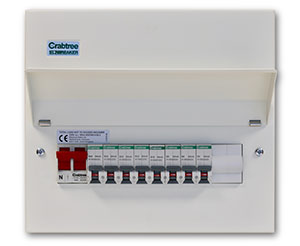
Point 4 is more pertinent than ever these days as an increasing number of appliances place heavier demands upon circuits. Unwanted, or nuisance, tripping is far more likely to occur if we have one 30mA RCD protecting multiple circuits. As more and more electrical equipment is used within modern homes the likelihood of cumulative circuit protector currents (earth leakage likely to occur during normal operation) reaching a level sufficient to trip a 30mA device becomes a real risk.
Point 2, to facilitate safe inspection & testing is equally difficult to achieve. For instance is it safe if the lighting has to be off while the sockets are being tested. Clearly the most compliant way to accommodate Chapter 31 is to avoid grouping circuits on to one or even two RCDs and instead provide separate electrical protection by individual RCBOs for each circuit. Under these circumstances all healthy circuits will remain in service.
Go further by switching off line and neutral
Facilitating safe inspection and maintenance can be time-consuming for electricians, even with RCBOs, unless those RCBOs switch both Line & Neutral.
Typically with RCBO protected circuits, the outgoing cables and flying leads have to be disconnected and then reconnected when undertaking insulation resistance tests. This is very time consuming, but by using an RCBO with switched line and neutral it is not necessary to disconnect the circuit. Simply switch off the RCBO and the circuit is instantly isolated and ready for test.
For social housing landlords, having an obligation to regularly test large quantities of installations, this type of RCBO can save time, money and provide a safer environment while fully meeting requirements of the IET wiring regulations; in particular the need for maintaining power continuity under fault conditions. RCBOs that switch both line and neutral, either in the event of a fault or to facilitate maintenance, totally isolate the circuit in question. This provides the occupier with a safe environment while they await the emergency electrician, any fault is completely isolated and all other healthy circuits remain in working order.
Miniature means Miniature
Another area where developments in RCBO design can make a real difference is in their size. Miniature RCBOs are the same size as a miniature circuit breaker, one module wide and only 90mm tall. This gives installers almost 30% more wiring space within a consumer unit. When considered along with long standing Starbreaker ‘plug in’ technology this makes for a quicker, easier, safer installation.
As part of its commitment to improving user safety and installer convenience, Crabtree has now developed the Starbreaker Miniature RCBO. This is safer because it switches both live & neutral, and at no extra cost. Totally isolated circuits cater for Health & Safety at work for electrical operatives whether they are conducting periodic testing, fault finding, replacing damaged accessories, extending or adding to circuits. Totally isolating faults provides a safer living environment for occupiers at times when things go wrong and the emergency electrician is on the way.
View Crabtree's profile:
New Condair RO for Better Humidity Control
Story
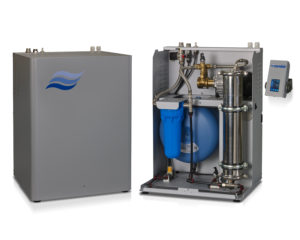
Condair is launching the Condair RO-A reverse osmosis water filter, specifically designed for use with humidification systems. The Condair RO-A removes 95% of dissolved solids from a humidifier’s supply water in order to reduce maintenance, improve energy consumption and benefit ongoing running costs.
When operating on regular mains water, a steam humidifier will frequently need to drain hot water and replace it with fresh, in order to dilute mineral levels in the boiling chamber. This process requires more energy to heat the incoming cold water. It also impacts humidity control, as when the boiling chamber’s temperature drops so does the steam output. By operating a steam humidifier on reverse osmosis (RO) water from a Condair RO-A, these drain cycles are reduced by up to 97%. This in turn reduces energy and water consumption of the humidifier and enables a close humidity control of up to ±1%RH.
With the use of virtually mineral-free RO water, the lime scale build-up inside a steam humidifier’s boiling chamber is minimal, reducing humidifier servicing requirements. When used with evaporative humidifiers, this reduction in lime scale formation results in evaporative pads having a much longer lifetime. The required frequency of an evaporative humidifier’s water tank drain cycles is also reduced, saving water. Operating spray humidifiers on RO water prevents dust from precipitating into the atmosphere as the spray evaporates, improving the performance of the system.
The Condair RO-A has been designed to deliver water at an ideal quality for humidification systems, whilst minimising waste water from the RO process. Many standard RO water filters provide product water at a purity that is much greater than that required to benefit humidifiers. The high purity means more water is sent to drain during the RO process to achieve a very low mineral content. By typically removing only around 95% of the minerals, the filtered RO water effectively provides significant benefits to humidification systems with minimal water being sent to drain.
Four models are available in the Condair RO-A range, with maximum outputs of 40, 100, 200 and 300 litres per hour. The 40 and 100 litres per hour models have an integrated water tank and a single RO membrane. The 200 and 300 litres per hour models have two or three RO membranes and an external water tank with up to 100 litre storage.
An independent wall-mounted touch screen controller provides an intuitive user interface with comprehensive reporting features. Alternatively the Condair RO-A can be controlled from any Condair humidifier that incorporates a Condair touch-screen control panel.
The Condair Group is the world’s leading specialist in humidification and evaporative cooling, with energy efficient, hygienic and innovative technologies for commercial, industrial and heritage applications. Condair is represented in the UK by Condair plc, which offers system design, manufacture, supply, installation, commissioning, maintenance and spares. Condair plc is the new name for JS Humidifiers following the organisation’s rebranding in October 2014. You can find out more by visiting the company’s website at www.condair.co.uk.
View Condair's profile:
AGILA OPENS UP NEW OPPORTUNITIES FOR FABRICATORS
Story

Since REHAU launched its AGILA sliding doors range sales of the PVC-U doors have been steadily growing and now more fabricators than ever are choosing to specify AGILA.
AGILA sliding doors are great for modern living, letting in light and creating openness in any space. They can be installed as a traditional patio door, entrance door or door to a conservatory, and are available in eight different colour options to provide a flexible solution which can be tailored to the individual needs of the customer. A perfect fit for REHAU’s popular TOTAL70 windows system, the AGILA sliding door also offers continuity of product across larger specifications.
As well as slimmer sightlines and superior aesthetics, AGILA sliding doors are incredibly energy efficient, with a triple glazing option on offer. They also come with enhanced security options and benefit from ERA’s new Total Security Guarantee for complete peace of mind.

Currently there are ten businesses fabricating the AGILA Sliding Door across the UK and Ireland. These include Climatec, Fenster Trade Frames, GRM, Polyframe, Euroglaze, Stormking, Hadrian, Costello PVC, O’Grady UPVC Ltd and Caledonia Doors in Cumbernauld being the most recent company to come on board .
To increase interest further, REHAU has released a new video online which highlights all the great features of the AGILA sliding doors to promote the product to fabricators and their customers.
Clare Higgins, Product Manager, from REHAU said: “The AGILA sliding door has been a fantastic addition to our doors offer, providing our partners with a high quality and flexible door solution they can offer to their customers individually or as part of a full portfolio of REHAU products. With the trend for large span doors continuing to gather pace in the domestic market, we expect to see even more contractors choosing to offer our sliding doors over the coming months and years.”
For further information please visit www.rehau.uk/agila.
View Rehau's profile:
WAGO joins forces with “Strategic Outsourcing Specialist”
Story

WAGO, the automation, interconnection and electrical interface specialist, has agreed a deal to supply components to PP Control & Automation for use in their electrical assemblies. The agreement is the latest in a series of new supplier partnerships struck by WAGO.
As one of the global leaders in electrical control systems, cable harnesses and sub-contract manufacturing solutions, PP Control & Automation serves building services, food and beverage, medical, energy, security, semiconductor manufacturing, printing and others. Customers are increasingly demanding more complex machines with shorter lead times. “Production capacity of particular machine configurations often has to be ramped up and ramped down at short notice. For this reason, the company needs suppliers that it can trust to provide reliable components to specification in a short space of time,” says Tony Hague, managing director of PP Control & Automation.
WAGO, whose interconnection and automation products provide the backbone for critical applications are supplying DIN rail-mounted terminal blocks, power supplies, electronic circuit breakers, and automation controllers and modules.
“Customers require a higher degree of configuration than ever before,” continues Hague, “And it’s up to us to provide exactly what they need. Things can move quickly in industry, and the increasing need for agility means that good product design and effective specification at component level are critical. Even the highest standards of workmanship can’t save you from inferior components, which is why partnerships with suppliers like WAGO are so important to us.
“In every case PP Control & Automation recommends and makes use of CAGE CLAMP® technology and the security of connection that it provides. We have already, on a number of occasions, replaced more traditional screw clamp connections with CAGE CLAMP, and our customers have seen an immediate and significant improvement in connection reliability.”
Tony Hoyle, managing director, WAGO Limited, adds; “We are always pleased to know that industry-leading OEMs such as PP Control & Automation choose WAGO products, and it demonstrates the high regard in which we are held within the market. A major benefit for us is that customers who may not ordinarily have specified WAGO get to see just what our products are capable of.”
View Wago's profile:
Zinc focal point for £14m Hastings Pier restoration
Story
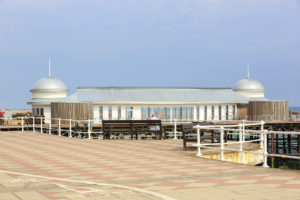 The Grade II-listed Hastings Pier, winner of this year’s Stirling Prize, has VMZINC® standing seam roofs in a natural finish. They are the most immediately recognisable feature of the £14.2m restoration, de Rijke Marsh Morgan’s vision having followed closure for eight years after a suspected arson attack.
The Grade II-listed Hastings Pier, winner of this year’s Stirling Prize, has VMZINC® standing seam roofs in a natural finish. They are the most immediately recognisable feature of the £14.2m restoration, de Rijke Marsh Morgan’s vision having followed closure for eight years after a suspected arson attack.
Described as a national Victorian treasure, the natural zinc covers seating areas and will weather to take on the textured, natural grey patina for which the metal is renowned. The work was undertaken by specialist metals contractor Roles Broderick Roofing, whose craftsmen also installed ornamental handmade zinc finials.
Phase 1 of dRMM’s design has a new West African ekki hardwood deck, the restored Victorian Western Pavilion with two new ‘pods’ and seating areas with benches made from recovered decking. The Heritage Lottery Fund enabled preliminary repairs to be undertaken below deck – a combined result of the fire, salt water erosion and storm damage.
Phase 2 will see VMZINC PIGMENTO® Blue 1mm thick interlocking panels used on walls of the new visitor centre.
View VM Zinc's profile:
Saniflo launches Kinedo Kinesmart
Story
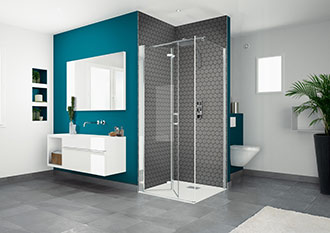
Saniflo – the UK’s leading designer and manufacturer of macerators, pumps and shower cubicles – has added a range of shower enclosures to its Kinedo portfolio, the Kinesmart.
The new range addresses a variety of modern-day bathroom design needs and can be fitted with or without profile. Whether it’s a new bathroom, a room with limited space, a wetroom or a shower with a level surface, the Kinesmart fits the bill.
In keeping with the Kinedo ethos, Kinesmart is swift and easy to install and with seven different options, there’s a configuration to suit every bathroom. The different door and hinge options include a single panel enclosure for an open shower area, a pivot door or fixed panel and pivot door option for larger spaces, a sliding door model, a pivot door and side panel enclosure, a bi-fold door with fixed glass side panel for corner installations, a quadrant design with pivot doors also for corner showers and a quadrant with sliding doors.
The vertical profiles come pre-assembled for swift installation; whilst framed models feature integrated screws at each corner so installers don’t have to worry about losing screws.
The Kinesmart swing doors can be fitted to open either inwards or outwards to fit any room and the 180 degree hinges mean the doors can fold flush with the wall to optimize space in the smallest of bathrooms.
Models with sliding glass doors have rollers pre-attached, allowing for swift installation, whilst pre-drilled slots in the profile ensure that lining up the profile with the walls and making any adjustments is easy and guarantees a perfect fit, overcoming the issue of uneven walls.
The new Kinesmart is designed to be fitted with Saniflo’s new anti-slip Kinerock shower tray made from an extremely durable and versatile patented mineral material. Easily cut to size it suits any shower area and is available in a variety of standard and large sizes and colours to suit most tastes and requirements.
Kinesmart shower enclosures feature Crystal Plus Glass, in keeping with the Kinedo range, guaranteeing easy cleaning and maintenance of the enclosure, as well as the standard two-year guarantee.
Ann Boardman, Saniflo UK Head of Marketing and Product Development, comments: “The new Kinesmart is a plug and play solution for shower enclosures. The experts at Saniflo have carefully considered every showering eventuality when creating this new range and have taken the hassle out of delivering a stunning shower enclosure. There really is a Kinesmart design to suit every bathroom, whether traditional or contemporary. And combined with our new Kinerock shower tray, Kinesmart is not only a knock-out enclosure, but it surely is the smart choice when it comes to creating the perfect showering space easily and swiftly.”
To order your copy of the new Saniflo domestic and commercial product catalogue visit www.saniflo.co.uk.
View Kinedo's profile:
NEW! Sanifos Underground Pump Stations
Story
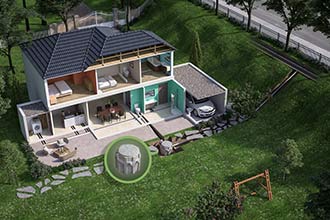
Saniflo has taken its 55 years of macerator pump design experience and translated it into a new range of underground pump stations for pumping residential and commercial waste water from flats, plants, outside event sites or public buildings.
The new Sanifos range consists of three models, the 110, 250 and the 500. The new products allow a pumping station to be sited outside a building and below ground where the drainage is too low for a sewer or too low for a surface mounted pumping station.
The two smaller units, the 110 and 250, are designed for the drainage of a single dwelling incorporating WC, bathroom, kitchen and utility room. With 110 litre and 250 litre tanks respectively, both units feature a single grinder pump with float activation and robust cutting blades to prevent clogging. The automatic 1500 watt motor is both powerful and quiet for unobtrusive operation and helps to discharge the waste up to a maximum height of 14m or horizontally along 110m or a lesser combination of both.
The Sanifos 500 features dual motors and is designed to work with a single dwelling with multiple storeys or multiple smaller holiday homes. It contains two separate load balanced pumps with high performance macerating systems that operate alternately for even wear and to provide a fail safe operation. In the event of overload both motors run simultaneously, or in the unlikely event of a motor fail, the other motor will take over. With a high capacity 500 litre tank the Sanifos 500 has multiple connections to take waste from bathrooms, kitchens and utility rooms in industrial or large domestic buildings.
For more information or for a copy of the Saniflo brochure please visit www.saniflo.co.uk.
For further information on the full range of Saniflo and Kinedo products please visit www.saniflo.co.uk and www.kinedo.co.uk.


